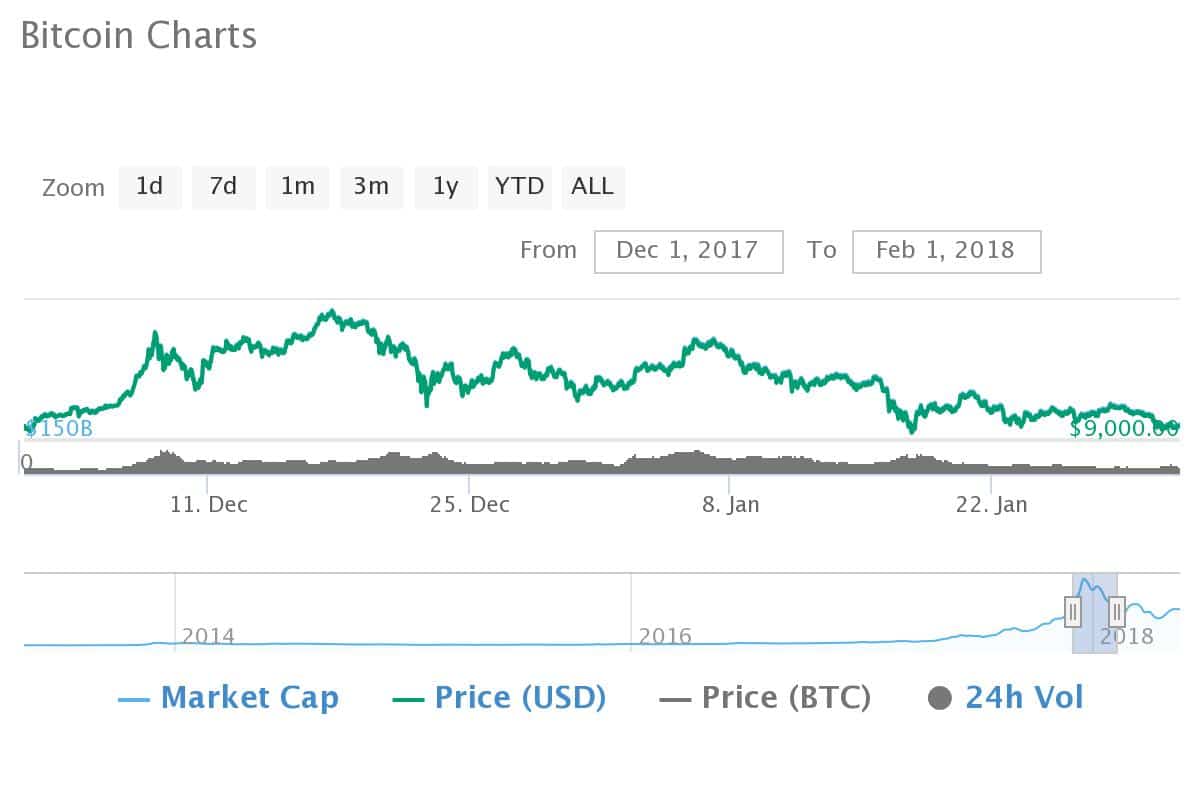$Analyzing conflicting responses as to the direction of bitcoin’s price is perhaps the strongest argument for simply HODLing. The massive price swings, emerging technical analysis, and lack of complementary expertise make the valuation process sometimes excruciating.
And yet, now more than ever, we’re seeing financial heavyweights hiring analysts in the field, revamping legacy systems company-wide, and simply trying to wrap their heads around one of the most elusive financial instruments of all time. With the space replete with simultaneous bullish and bearish sentiments, where is the market really heading?
The Bulls: Twitter, Abra, Tim Draper, and Pantera
On the one hand, we have the bulls. These are the folks who find bitcoin’s price escalation to be a sheer fact. Never before have we experienced such a financial revolution, they call out, and bitcoin, as well as the blockchain behind it, will lead the way. But who exactly are these bulls and what do they have to do with finance?
Jack Dorsey, better known for helping to found Twitter (a hive of crypto commentary these days), told The Times back in March 2018 that the world will only have one currency; bitcoin. He went on to say that even technical challenges facing widespread adoption will vanish as more people simply start using it.
“There are newer technologies that build off of blockchain and make it more approachable.”
Dorsey’s positive attitude has also generated serious financial contributions to Lightning Labs, a firm working exclusively on Bitcoin’s speedy second-layer protocol, the Lightning Network. Even before that, the Twitter CEO’s financial apparatus, Square, announced in January 2018 that they would support “Bitcoin because we see it as a long-term path towards greater financial access for all.”
The endorsement by Twitter, one of the best examples of the internet’s possibilities, has little to do with financial advice, however. Critics could argue that mass adoption of bitcoin would, ultimately, be of great benefit to someone like Dorsey and his platform. They may even be right too, except that Dorsey isn’t alone in his financial suspicions.
Ex-Goldman Sachs senior analyst, NASA and CIA researcher Bill Barhydt is also in the same company. Now the CEO of Abra, a cryptocurrency investing firm among other services, the financier has seen his fair share of nascent projects following his experience in venture capitalism. Further to that, he views the emerging crypto asset class as ripe for institutional picking.

Bitcoin Price Chart: Dec. 2017 – Feb. 2018 (Source: Coinmarketcap)
In the midst of bitcoin’s “death-cross” (financial terminology for when an asset’s 50-day moving average crosses its 200-day average), Barhydt remained confident. The reason why? Institutional investors:
“I talk to hedge funds, high net worth individuals, even commodity speculators. They look at the volatility in the crypto markets, and they see it as a huge opportunity. Once that happens, all hell will break loose.”
Now, in May 2018, we’re seeing more than a few firms jumping in bed with cryptocurrencies. Goldman Sachs officially announced crypto trading bitcoin futures, rumors of NASDAQ opening a cryptocurrency exchange have circulated the space, and, most recently, the New York Stock Exchange’s parent company, Intercontinental Exchange (ICE), has been developing a virtual exchange to make way for crypto assets. All of these sentiments, coupled with the recent recovery of the market, indicates some semblance of truth in Barhydt’s January predictions.
Where extravagant price predictions lurk, so too does Tim Draper. The investment leader in companies like Tesla, SpaceX, and Twitter reported immediate interest in Bitcoin when he first found out about it. Fortunately for the long-time investor, the funds from the Silk Road shuttering were on auction by the U.S. government. So, in 2014, Draper invested $30,000 worth (In January of that year BTC nearly $1,000 until bottoming out closer to $200 at years end).
In 2018, Draper also predicted that the price of one bitcoin would rise to $250,000 by 2022, but no one really seems to know how exactly he arrived at this figure. In any case, the Bitcoin tie seems like enough credibility these days, right?

Tim Draper Tie Image (Source: The Next Web)
Our final bull to discuss is the CEO of hedge fund Pantera, Dan Morehead. In a company-wide blog post in April 2018, Morehead iterated many of the same sentiments from Barhydt and even cited the death cross as “a very good time to buy.”
He told CNBC’s Fast Money team that bitcoin is “65 percent below its high, you don’t get that opportunity very often,” and added that the “institutional money” would soon join and “drive the markets much higher.” These sentiments also came shortly after the SEC busted relatively well-known ICO, Centra Tech. Inc.
The Bears: Metcalfe’s Law and Dr. Doom
The side is also rampant with naysayers, some of which are actually pretty well founded. As such, any clever investor (or financial spectator, for that matter) would do well to purvey the other end of the spectrum. If anything, it’ll help you sleep at night to know that people are critically thinking about this new world of internet monies.
Thank goodness for Swiss researchers. Even the title “researcher” reminds you that some serious experts are picking apart the complex technical aspects of bitcoin. Their findings, however, were far less optimistic than the investment gurus from above. Spencer Wheatley and a troupe of clever individuals at ETH Zurich in Switzerland set out to get some concrete answers in the way of valuing bitcoin.
In April 2018, they reported back with something called Metcalfe’s law which comes from Bob Metcalfe, the inventor of Ethernet. The proposal follows as such, “Metcalfe’s Law states that a network’s value is proportional to the square of the number of its users.” Pretty convenient indeed. From there the entire process becomes pretty easy, and Wheatley concluded that:
“Our Metcalfe-based analysis indicates current support levels for the bitcoin market in the range of $22–44 billion, at least four times less than the current level.”
Numerically, this means something like a drop in market value down to $77 billion by the end of 2018. Yikes!
Then there’s the infamous Nouriel Roubini, or “Dr. Doom,” a name which he earned for accurately predicting the 2008 crisis, has an even bleaker outlook for the pioneer cryptocurrency; zero. At the Global Conference of the Milken Institute, Roubini and Barhydt took center stage in May 2018, each lancing his own version of the crypto future.
Roubini’s principle distinction was that cryptocurrencies are closer to a store of value rather than a payment mechanism. He continued to point out that until the major contenders can compete with the likes of Visa, bitcoin, and ether will very soon be irrelevant.
So, Who Should We Trust?
No matter where you stand, it all makes for lively discussion. After entertainment, it should also inspire due diligence on the part of prospective investors. Triple-check, be wary of crypto-twitter, and maybe just buy some BTC and try it out for yourself. Gathering as much information on the subject is the name of the game in crypto.
Several researchers and financial experts believe they have found a way to evaluate at least some of the digital assets and their potential. Manik Patel, Global Senior Director at AIG, has modeled what digital assets exposure would look like in an institutional portfolio. Dozens of crypto hedge funds have created their own models on justifying the price and value of cryptocurrencies.
The BCI Summit in New York on June 11 to 12, 2018 will dive with speakers such as Patel and Arianna Simpson in the challenging mission of valuing existing and growing digital assets. For those interested BCI Summit will also be giving away $500 worth of bitcoin with every registration up until May 11, 2018.
The post Evaluating Bitcoin and Digital Assets: Who Do You Trust? appeared first on BTCMANAGER.
Source and More information: Evaluating Bitcoin and Digital Assets: Who Do You Trust?
Author: BTCManager.com
Leave a Reply